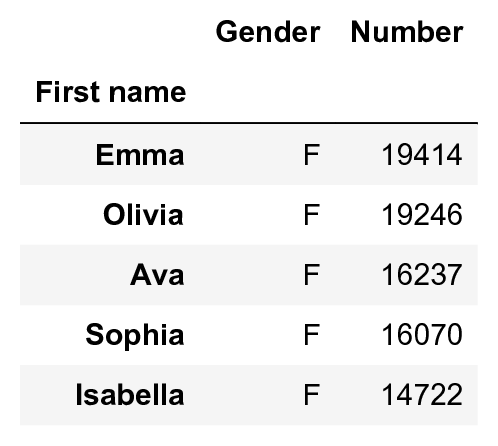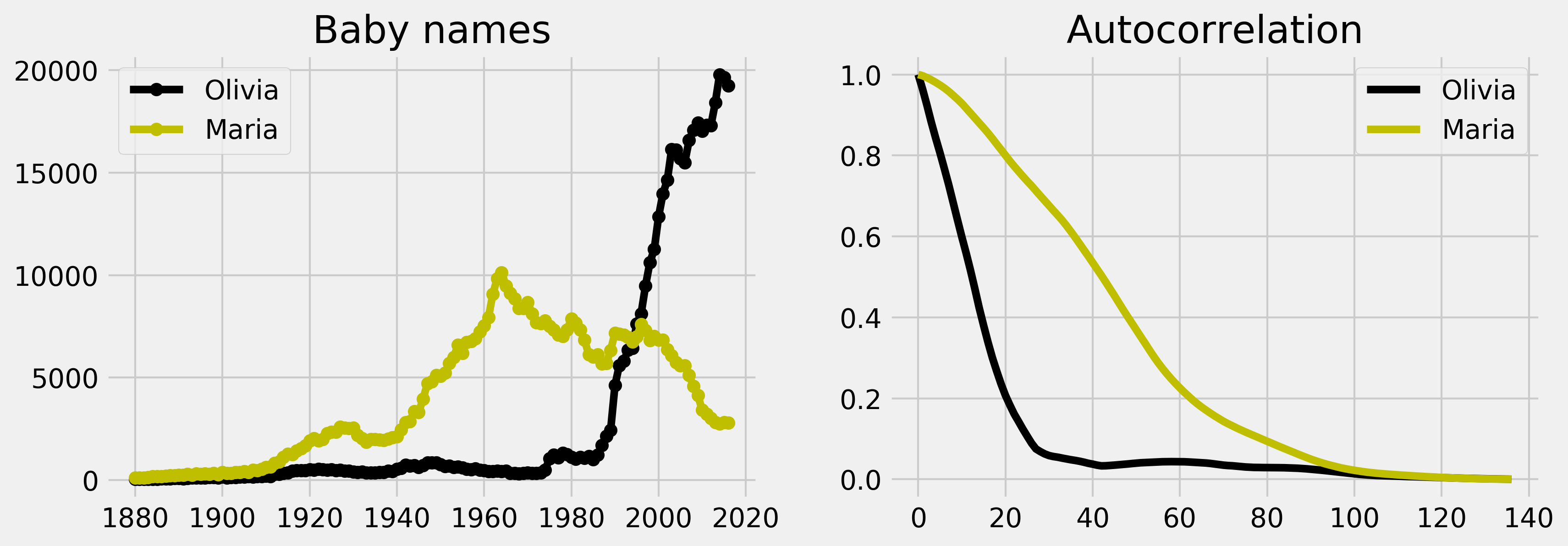Jupyter Snippet CB2nd 03_autocorrelation
Jupyter Snippet CB2nd 03_autocorrelation
10.3. Computing the autocorrelation of a time series
import os
import numpy as np
import pandas as pd
import matplotlib.pyplot as plt
%matplotlib inline
import io
import requests
import zipfile
url = ('https://github.com/ipython-books/'
'cookbook-2nd-data/blob/master/'
'babies.zip?raw=true')
r = io.BytesIO(requests.get(url).content)
zipfile.ZipFile(r).extractall('babies')
%ls babies
yob1902.txt
yob1903.txt
yob1904.txt
...
yob2014.txt
yob2015.txt
yob2016.txt
files = [file for file in os.listdir('babies')
if file.startswith('yob')]
years = np.array(sorted([int(file[3:7])
for file in files]))
data = {year:
pd.read_csv('babies/yob%d.txt' % year,
index_col=0, header=None,
names=['First name',
'Gender',
'Number'])
for year in years}
data[2016].head()

def get_value(name, gender, year):
"""Return the number of babies born a given year,
with a given gender and a given name."""
dy = data[year]
try:
return dy[dy['Gender'] == gender] \
['Number'][name]
except KeyError:
return 0
def get_evolution(name, gender):
"""Return the evolution of a baby name over
the years."""
return np.array([get_value(name, gender, year)
for year in years])
def autocorr(x):
result = np.correlate(x, x, mode='full')
return result[result.size // 2:]
def autocorr_name(name, gender, color, axes=None):
x = get_evolution(name, gender)
z = autocorr(x)
# Evolution of the name.
axes[0].plot(years, x, '-o' + color,
label=name)
axes[0].set_title("Baby names")
axes[0].legend()
# Autocorrelation.
axes[1].plot(z / float(z.max()),
'-' + color, label=name)
axes[1].legend()
axes[1].set_title("Autocorrelation")
fig, axes = plt.subplots(1, 2, figsize=(12, 4))
autocorr_name('Olivia', 'F', 'k', axes=axes)
autocorr_name('Maria', 'F', 'y', axes=axes)
